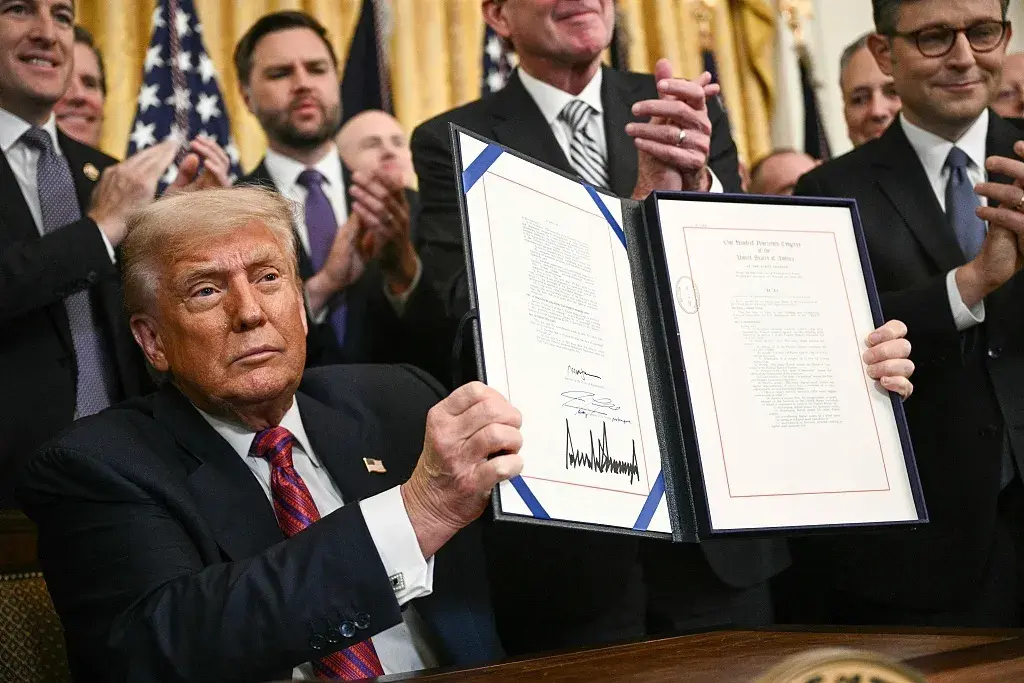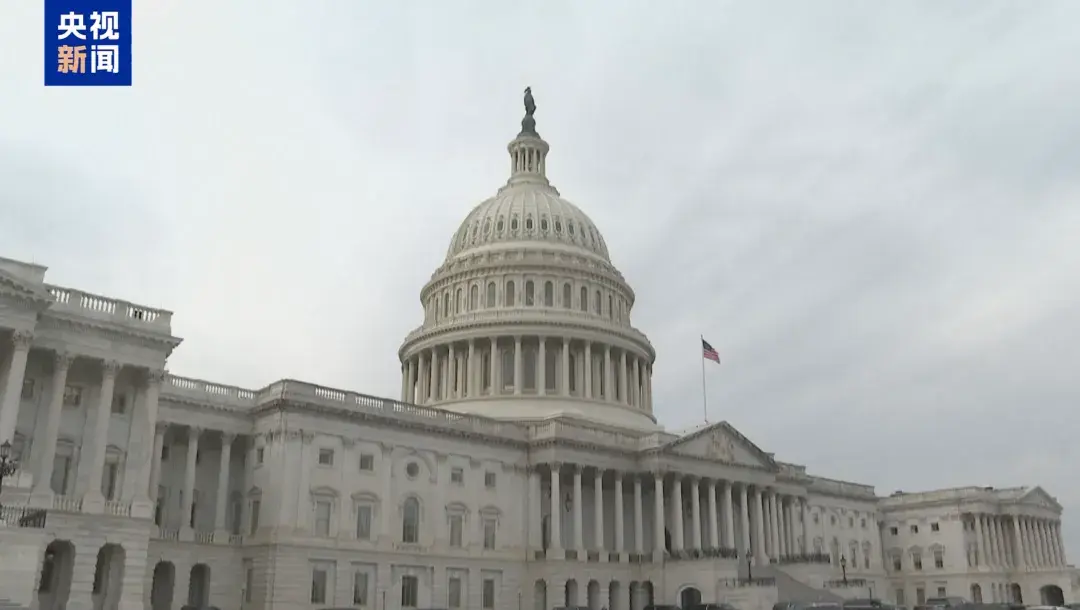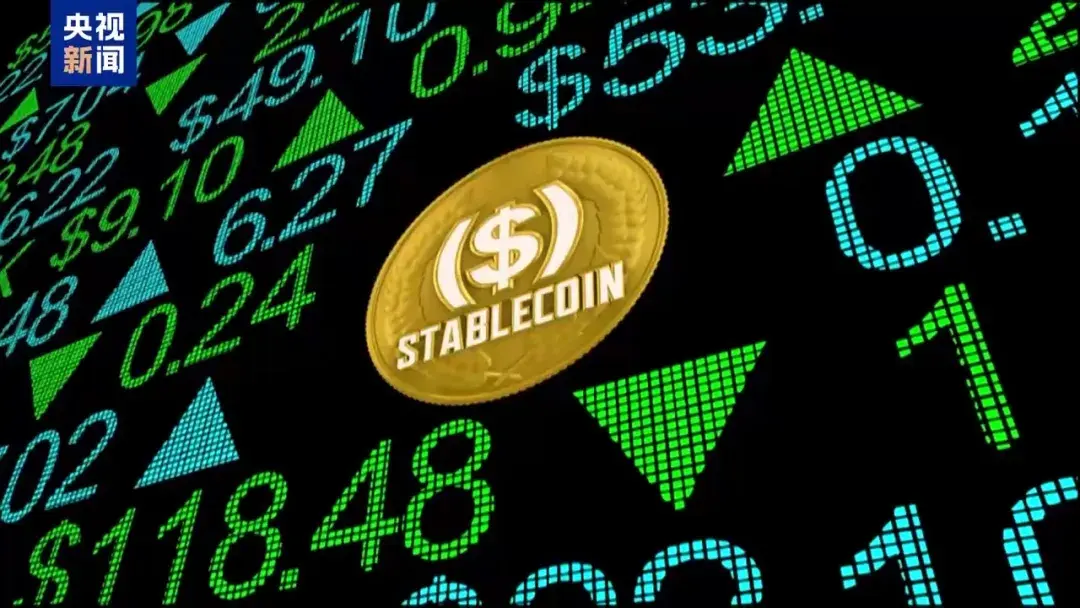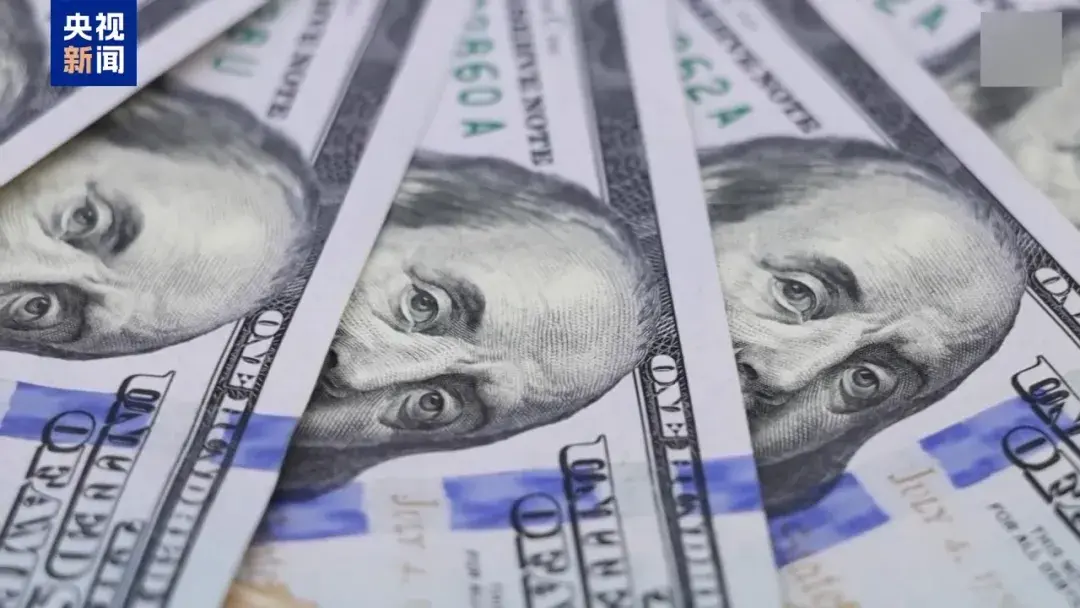Written by: CCTV News
On the 18th local time, US President Trump officially signed the (Guidance and Establishment of the National Innovation Act for US Stablecoins) (referred to as the (Genius Act)), marking the first formal establishment of a regulatory framework for digital stablecoins in the United States.
Trump stated that stablecoins will increase demand for US Treasury bonds, lower US interest rates, and ensure the global reserve currency status of the dollar.
Since Trump began his second term, he has launched several initiatives to support cryptocurrencies. What impact will the recent rapid push for legislation related to the (Genius Act) have on the United States?

△ On July 18, Trump officially signed the (Genius Act).
Accelerating the legislative process
On June 17, the US Senate passed the (Genius Act) with a vote of 68 to 30, marking the first time the chamber has approved major cryptocurrency legislation.
On July 17, the US House of Representatives voted to pass three bills related to stablecoins and other cryptocurrencies: (Guidance and Establishment of the National Innovation Act for US Stablecoins), (Digital Asset Market Clarity Act), and (Anti-Central Bank Digital Currency Surveillance National Act).
On July 18, US President Trump signed the (Genius Act) and referred to it as "one of the greatest transformations in financial technology since the birth of the Internet." He also reiterated that "a central bank digital currency will never be allowed to be established in the US."

Three questions about US cryptocurrency-related legislation
What is a stablecoin?
Cryptocurrencies are generated through algorithms and adopt a decentralized model, with holders updating quantities according to the algorithm. Major cryptocurrencies include Bitcoin, stablecoins, etc.
Stablecoins differ from Bitcoin in that their prices are relatively stable, typically pegged at a 1:1 ratio with the dollar. After the signing of the (Genius Act), stablecoins will be required to be backed by liquid assets such as US dollars or US short-term Treasury bonds, and issuers will be required to disclose stablecoin reserve details monthly.

Currently, the two largest stablecoins by market value are Tether (USDT) and USD Coin (USDC), which together account for about 90% of the total market value.
Stablecoins were first launched in 2014. In 2020, the global market value of stablecoins was only $20 billion, at a preliminary stage of the market. Since then, stablecoins have entered a rapid growth phase supported by two main drivers —
On one hand, in cryptocurrency trading, over 90% of Bitcoin transactions are settled through USDT/USDC, making it a "crypto dollar standard";
On the other hand, in emerging market countries, stablecoins have become a "digital safe-haven asset" for the common people, accounting for as much as 72% of cryptocurrency trading volume in these countries.
According to statistics from the cryptocurrency data provider CoinTiger, the current market size of stablecoins is approximately $247 billion. US Treasury Secretary Yellen stated that the stablecoin market is expected to grow to $3.7 trillion by 2030.

What is the US government's goal in promoting stablecoins?
Experts point out that during the development of digital currencies, the value and influence of the dollar have been significantly impacted. The US hopes to leverage the strong existing advantages of the dollar by promoting the stablecoin model, maintaining and enhancing its influence in the stablecoin and digital currency sectors.
Trump and some US officials suggested that issuing stablecoins might help reduce future pressure on US debt.
Fundamentally, the US government promotes stablecoins to maintain its dominance in the global monetary and payment systems, further influence the future global monetary and payment systems, and retain the competitiveness of the US itself.

Can the US maintain the dollar's status through stablecoins?
Experts analyze that the current influence of the dollar globally is based on the post-World War II international economic order, which has formed the dollar's own international influence. The measures currently taken by the Trump administration indicate a lack of recognition of the US's trade deficit and a desire to maintain a surplus or balance. Maintaining a surplus means that there will be no more dollars flowing into the international market through trade, which will obviously impose certain constraints on global dollar usage.
Whether a currency or a payment method can gain favor is not only a matter of cost of use but also includes the credibility that the currency represents.
Experts believe that whether the US can bear necessary responsibilities globally, fulfill commitments, and maintain stability in global trade and economy, rather than intervening in international economic and trade relations through sanctions and long-arm jurisdiction, is crucial for the development of stablecoins. If these cannot be achieved, merely replacing the dollar with another expression without changing the value determination method of the dollar itself will likely make it difficult for both the dollar and the corresponding stablecoin to gain global and broader support in the future.
The bill has been controversial within the United States.
Analysts believe that once the (Genius Act) becomes law, it will pave the way for US banks to independently issue digital assets. Executives from Wall Street firms like JPMorgan and Citibank are eager to explore digital asset business, while Bank of America CEO Brian Moynihan cautioned that the demand for digital currencies is still unclear.
The (Genius Act) has also faced skepticism and opposition from some members of both parties. Some Democrats argue that the bill fails to provide sufficient safeguards for consumers, national security, or financial stability, and accuse the Trump family of having ties to cryptocurrencies. Opposing Republicans believe the bill does not follow an executive order signed by Trump in January, which includes a ban on implementing central bank digital currencies.


